IEEE Future Directions Talks Future Networks
IEEE Future Directions Talks Future Networks is a series of Q&A articles with IEEE experts.
IEEE Future Directions Talks 5G: David Witkowski Bridging the 4G/5G Gap

"I think it's incumbent upon all stakeholders—municipalities, agencies, and the industry itself—to figure out how we're going to bridge the gap between the tower monopole world that we were in five years ago to the small cell 5G world that we're going into now." |
David Witkowski is an author, advisor, and strategist who works at the intersection between wireless telecommunications and local/regional governments. After serving in the U.S. Coast Guard and earning his B.Sc. in Electrical Engineering from the University of California, he held managerial and leadership roles for companies ranging from Fortune 500 multi-nationals to early-stage startups. David is the Founder & CEO of Oku Solutions LLC and serves as the Executive Director of Civic Technology Initiatives at Joint Venture Silicon Valley. He also serves as Co-Chair of the Deployment Working Group at IEEE Future Networks, Co-Chair of the GCTC Wireless SuperCluster at NIST, on the Board of Expert Advisors for the California Emerging Technology Fund, and is a Fellow in the Radio Club of America and a Senior Member in the IEEE.
David is leading a two-part course from IEEE Future Networks called "Bridging the 4G/5G Gap: Telecommunications Roadmap for Implementation." This course provides crucial insights to local government officials and staffers who need to understand how telecom projects work, and to industry professionals (sales staff and deployment staff) who are looking to build out new infrastructure in local municipalities. Learn more and register for one or both parts here.
Question: Moving from 4G to 5G requires more than simply flipping a switch on a new technology. What do city planners and public works officials need to know?
Witkowski: In today's world where we're moving from the macro towers that cover tens or hundreds of square miles to small cells and 5G, we're dealing with coverage that is at the neighborhood level. The responsibilities within cities have really shifted. In the past, cities were permitting towers and monopoles based upon zoning and planning. These were private property transactions. And the question was really, is it safe is, does it aesthetically match with the neighborhood and what are the issues with a large structure on private property? Now that we've moved from that macro monopole world into small cells and 5G, we're deploying wireless technology on light poles or utility poles in the public rights of way. And so cities have really had to ramp up their ability to deal with the applications that are coming from telecommunications carriers and the companies that help them build these facilities. Of course, at the same time, people are using their phones more and more — during the pandemic we've seen a massive explosion in the use of smartphones; people are in their homes and they need those devices to work. So the responsibility that cities have had to shoulder for working with telecommunications, and with the wireless industry, has really grown over the past five years, and that's not going to slow down anytime soon — we're going to see a continued explosion in the amount of deployments that cities are going to have to deal with, and so I think it's really important that cities learn how this technology works, that they become well versed in the topic, and to help bridge the gap between the macro monopole world that they were in and the small cell world that we're entering today.
IEEE Future Directions Talks 5G: Thyaga Nandagopal
 Dr. Thyaga Nandagopal is an IEEE Fellow and formerly served as Associate Editor for IEEE Transactions on Mobile Computing. He currently serves as Deputy Division Director for the Division of Computing and Communication Foundations in the Directorate of Computer and Information Science and Engineering at the National Science Foundation. In this interview, Dr. Nandagopal discusses challenges in 5G research, policy and business case development, and shares his view of common 5G misconceptions.
Dr. Thyaga Nandagopal is an IEEE Fellow and formerly served as Associate Editor for IEEE Transactions on Mobile Computing. He currently serves as Deputy Division Director for the Division of Computing and Communication Foundations in the Directorate of Computer and Information Science and Engineering at the National Science Foundation. In this interview, Dr. Nandagopal discusses challenges in 5G research, policy and business case development, and shares his view of common 5G misconceptions.
Question: Would you introduce yourself to the IEEE Future Directions Talks 5G audience?
Nandagopal: Currently, I serve as the deputy division director for the Division of Computing and Communications Foundations at the National Science Foundation (NSF). Prior to this assignment, I managed wireless networking and mobile computing research within the Networking Technologies and Systems (NeTS) program at NSF. I’ve been with the NSF since February 2012.
Question: What role does the National Science Foundation play in 5G research?
Nandagopal: Our role is to foresee the future and help prepare for it. That work includes fundamental research and technology validation/testing in the pre-commercialization phase. For example, since 2008, NSF has funded critical pieces of 5G research into millimeter waves and better modulation schemes. This work will also benefit sensing applications for healthcare. Our research community develops ideas for society’s benefit. We have played an essential role in the evolution of wireless technologies for the past 20 years, though our early-stage investments in research. We also stay ahead of the curve by investing in research for spectrum bands that are not an industry focus right now. Some of these activities can be seen at https://www.nsf.gov/cise/5G/. Beyond the mm-wave bands, we are even looking at terahertz networks, which are a pipeline to currently unimagined applications.
IEEE Future Directions Talks 5G: Kaniz Mahdi - Part 1 of 2
Kaniz Mahdi is Vice President of Advanced Architectures at Ciena, responsible for Ciena’s global technology strategy and target architecture for 5G era networks underpinned with Open Architectures, Network Function Virtualization, Software Defined Networking, Machine Intelligence and Autonomics. She contributes to ongoing activities in IEEE SDN and IEEE 5G where her focus is setting up a roadmap for the evolution of the industry for 5G and beyond.
Question: What do you see as the key transformation trends in networks in the 5G era?
Mahdi: There are three transformation trends currently at play which help to shed some light on how the future network trajectory is being shaped by the confluence of SDN and 5G. First and foremost is access evolution, or should I say access revolution. Unification of access networks has been talked about for as long as I've been in the industry; probably over decades. However, wireless and wireline networks have been evolving rather independent of each other, and it's only now that the lines between the wireless and wireline have started to blur thanks to the flexibility and programmability made possible by SDN/NFV. More importantly, it's basically the radio characteristics being promised with 5G that will be very helpful in overcoming some of the key inhibitors of broadband convergence; the key inhibitors being the bandwidth, the reachability and the performance.
The next trend that I would like to highlight here is the pivot that we see shaping for cloud systems. Centralization of resources with cloud computing has been on the rise since the early 2000's. The web providers have been leading the market, with telcos beginning to transform the networks with SDN/NFV in what appears to be the race for content. However, massive application of machine intelligence in all facets of our lives indicates an imminent pull towards sort of a reversal back into distributed computing.
IEEE Future Directions Talks 5G: Kaniz Mahdi - Part 2 of 2
Kaniz Mahdi is Vice President of Advanced Architectures at Ciena, responsible for Ciena’s global technology strategy and target architecture for 5G era networks underpinned with Open Architectures, Network Function Virtualization, Software Defined Networking, Machine Intelligence and Autonomics. She contributes to ongoing activities in IEEE SDN and IEEE 5G where her focus is setting up a roadmap for the evolution of the industry for 5G and beyond.
This article is Part 2 of a two-part interview. Read Part 1.
Question: Does network slicing fit into this design?, continued
Mahdi: Mobile networks, and this is a little bit of a history lesson here, mobile packet data systems were basically built using multitude of purpose-built Mobility and Security gateways bolted on a packet network originally designed for non-differentiated web browsing. This results in extra cost (in terms of resource consumption, as well as latency budget) and duplication of functionality as user packets traverse multiple functional stacks at different touch points on their path through the mobile system; not to mention complexity in configuring such systems, and operational inefficiencies resulting from layers and layers of features bolted on over time.
IEEE Talks 5G: Ivan Seskar
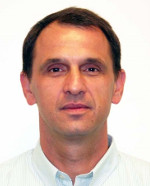
Ivan Seskar serves as co-chair of the IEEE 5G Initiative Testbed Working Group and is an IEEE Senior Member. He also serves as Associate Director and Chief Technologist of WINLAB at Rutgers University, where he is Principal Investigator for the National Science Foundation-supported GENI Wireless project. In this interview, Seskar defines 5G, discusses the ORBIT 5G Testbed and IEEE’s support for innovation and competition in 5G-related technology and standards development.
Question: At the IEEE 5G and Beyond Testbed Workshop in Toronto last fall, you joked that you didn’t know what “5G” is. Would you explain why?
Seskar: A little humor can be a good thing in public speaking, if only to make an audience sit up. When people talk about “5G” they're actually talking about a collection of technologies, most of which remain in development. It’s still not clear whether 5G will turn out to be a compound collection of various technologies or whether there will be a deeper integration that ties them all together. So when people discuss 5G in the media, they often emphasize very different technologies to explain it. So it’s a simple, umbrella term for multiple technology advancements still under development. That’s why we’re exploring use cases with the help of the ORBIT 5G Testbed.
IEEE Talks 5G: James Irvine
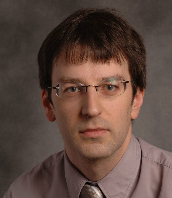 James Irvine is chair of the IEEE 5G Web Portal and Content Development Working Group and co-chair of the IEEE 5G Community Development Working Group. He is also Secretary of the IEEE Vehicular Technology Society, a past president of the Society and founding editor-in-chief of the IEEE Vehicular Technology Magazine. Dr. Irvine is a Reader in the Department of Electronic and Electrical Engineering at the University of Strathclyde in Glasgow, where he leads the Mobile Communications Group. In this interview Dr. Irvine discusses the implications of 5G mobile technology for connected cars, and related topics.
James Irvine is chair of the IEEE 5G Web Portal and Content Development Working Group and co-chair of the IEEE 5G Community Development Working Group. He is also Secretary of the IEEE Vehicular Technology Society, a past president of the Society and founding editor-in-chief of the IEEE Vehicular Technology Magazine. Dr. Irvine is a Reader in the Department of Electronic and Electrical Engineering at the University of Strathclyde in Glasgow, where he leads the Mobile Communications Group. In this interview Dr. Irvine discusses the implications of 5G mobile technology for connected cars, and related topics.
Question: Would you briefly describe your academic work as well as your interest in the IEEE Vehicular Technology Society?
Irvine: My main research interest at the University of Strathclyde is in advanced cellular communications and in wireless security. In essence, we work on security and privacy for future wireless systems. As for the IEEE Vehicular Technology Society, I should mention at the outset that it has a long history. It started as the Vehicular Communications Group in the Institute of Radio Engineers in 1949. In those days, “mobile” phones were car phones, which filled the entire trunk of a vehicle. Today, we have three areas of interest within the Society: mobile communications, automotive electronics and land transportation. Automotive electronics covers collision avoidance, entertainment systems, even electric vehicle propulsion. Land transportation covers public transit such as railways, tramways and metro systems. We’re very much an applications-oriented society. Instead of just looking at underlying technologies, we’re focused on bringing those technologies together to provide products for consumers. Today, more than half the value of a new car is in the electronics. Cars are no longer mechanical devices, they’re primarily electrical devices, even if they rely on traditional internal combustion engines. And the Society bridges a gap between onboard vehicular technology and the wireless communication required for connectivity between vehicles or between vehicles and cellular networks or the cloud.
IEEE Talks 5G: Alex Wyglinski
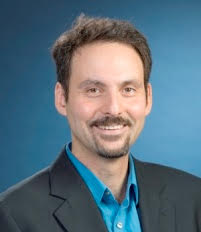 Alexander M. Wyglinski is co-chair of the Community Development Working Group for IEEE 5G and president-elect of the IEEE Vehicular Technology Society. He is also Associate Professor of electrical and computer engineering and Director of the Wireless Innovation Laboratory at Worcester Polytechnic Institute. In this interview, Dr. Wyglinski discusses mobile communications and automotive applications and spin-off applications such as the Internet of Things.
Alexander M. Wyglinski is co-chair of the Community Development Working Group for IEEE 5G and president-elect of the IEEE Vehicular Technology Society. He is also Associate Professor of electrical and computer engineering and Director of the Wireless Innovation Laboratory at Worcester Polytechnic Institute. In this interview, Dr. Wyglinski discusses mobile communications and automotive applications and spin-off applications such as the Internet of Things.
Question: Would you briefly describe how you became involved in the IEEE Vehicular Technology Society?
Alex Wyglinski: My involvement with vehicular technology started at the 2000 IEEE Vehicular Technology conference in Boston with my second, published conference paper, and the connection has grown.
My academic interests have revolved around wireless communications and networking. After earning my doctorate in electrical engineering from McGill University in 2005, I moved from Canada to the United States. At the University of Kansas, 2005-07, I began exploring applied aspects of wireless communication technology, including software-defined radio (SDR), which has many applications.
IEEE Talks 5G: Three Questions for Gerhard Fettweis
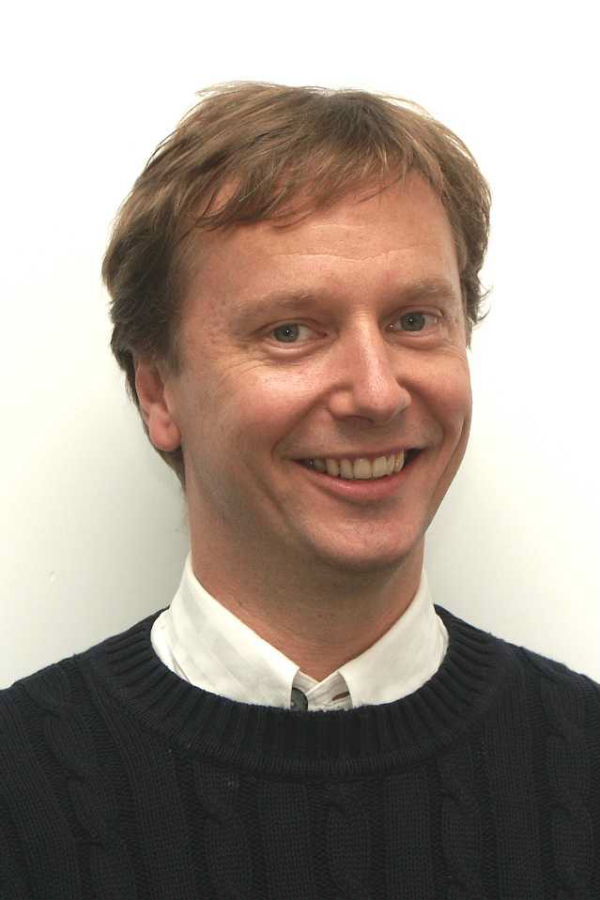 January 2017
January 2017
Gerhard Fettweis is co-chair of the IEEE 5G Initiative and a member of the IEEE Communications Society. Fettweis also serves as Senior Research Scientist at the International Computer Science Institute and as Vodafone Chair Professor at Dresden University of Technology. In this interview, Fettweis provides his perspective on 5G technology issues and the commercial opportunities it will support.
Question: The development of 5G cellular networks will bring new data speeds, lower latency, and a new level of network capacity, flexibility, and manageability. How will those advanced capabilities be put to use?
IEEE Talks 5G: Three Questions for Ashutosh Dutta
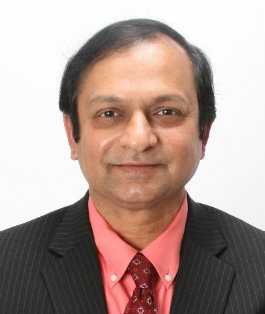 December 2016
December 2016
Ashutosh Dutta is co-chair of the IEEE Future Directions 5G Initiative and the IEEE Communications Society’s Industry Outreach Director. In the private sector, Dutta serves as Lead Member of Technical Staff(LMTS) at AT&T. In this interview, Dutta provides insight into the 5G Initiative’s work and the challenges presented by the development of 5G-related technologies.
Question: Would you provide an overview of the IEEE’s 5G Initiative and its current activities?
IEEE Talks 5G: An interview with the co-leaders of the IEEE 5G Initiative

 November 2016
November 2016
Ashutosh Dutta and Gerhard Fettweis are co-chairs of the IEEE Future Directions 5G Initiative and both are members of the IEEE Communications Society. In the private sector, Dutta currently serves as Lead Member of Technical Staff at AT&T. Fettweis serves as Senior Research Scientist at the International Computer Science Institute and as Vodafone Chair Professor at Dresden University of Technology. In this interview, the two scientists discuss the topic of 5G and its opportunities and challenges.
Question: What is 5G and why has IEEE Future Directions created an initiative based on it?


